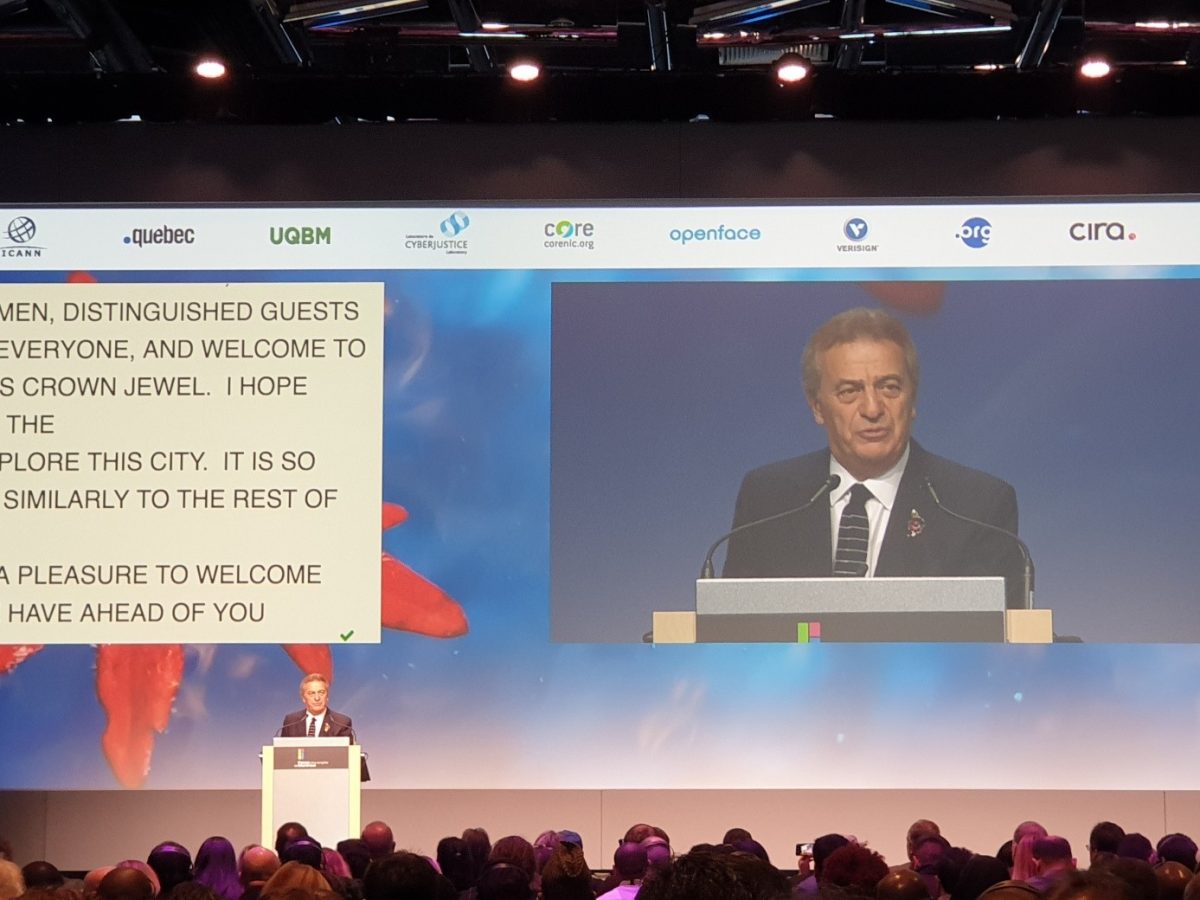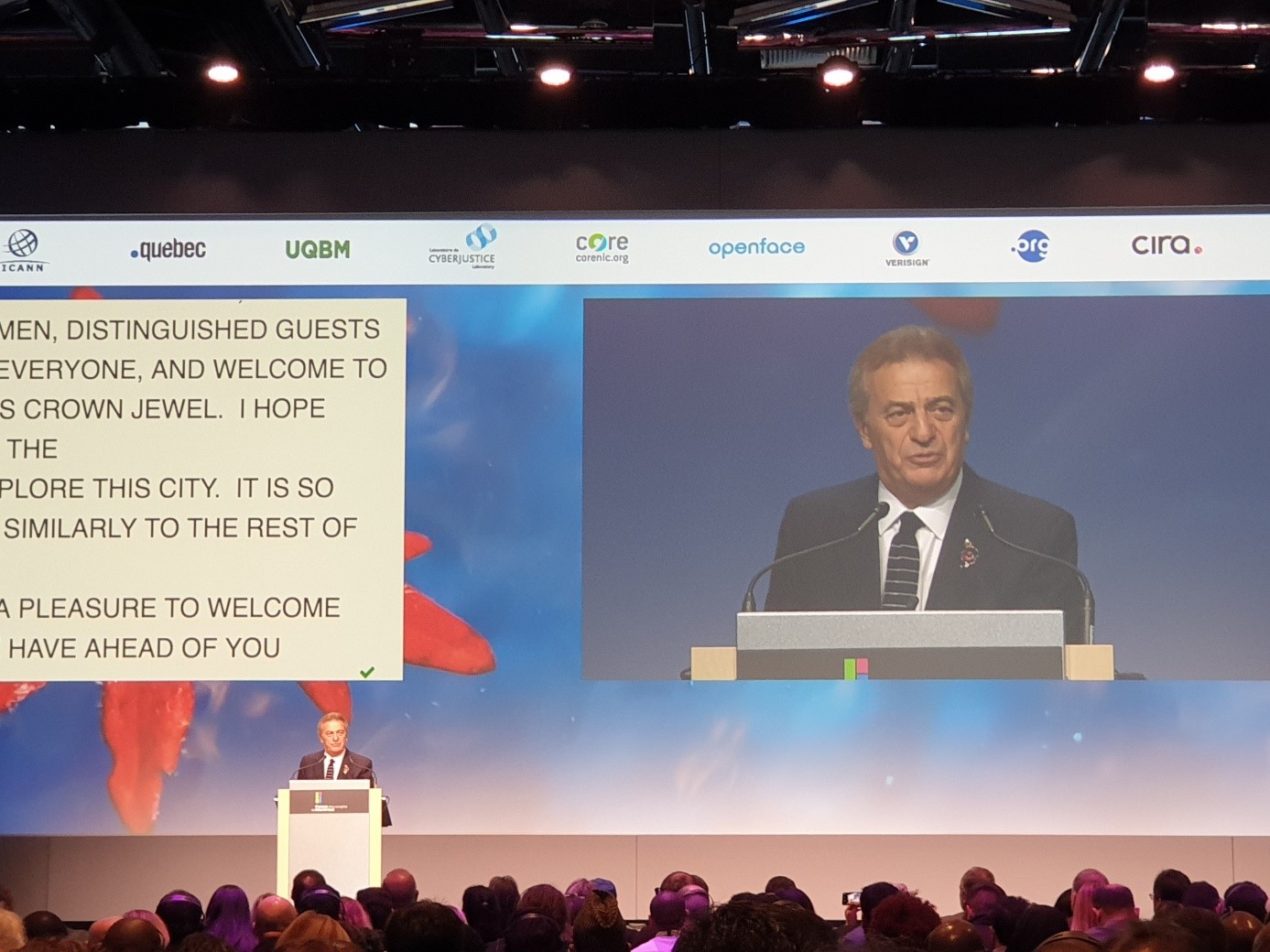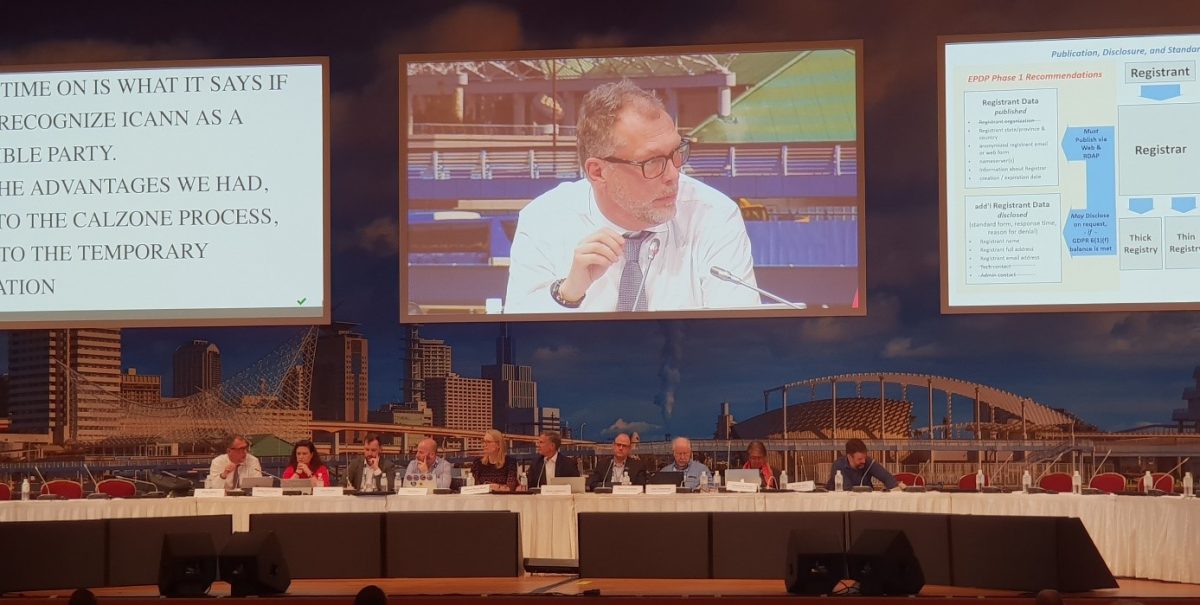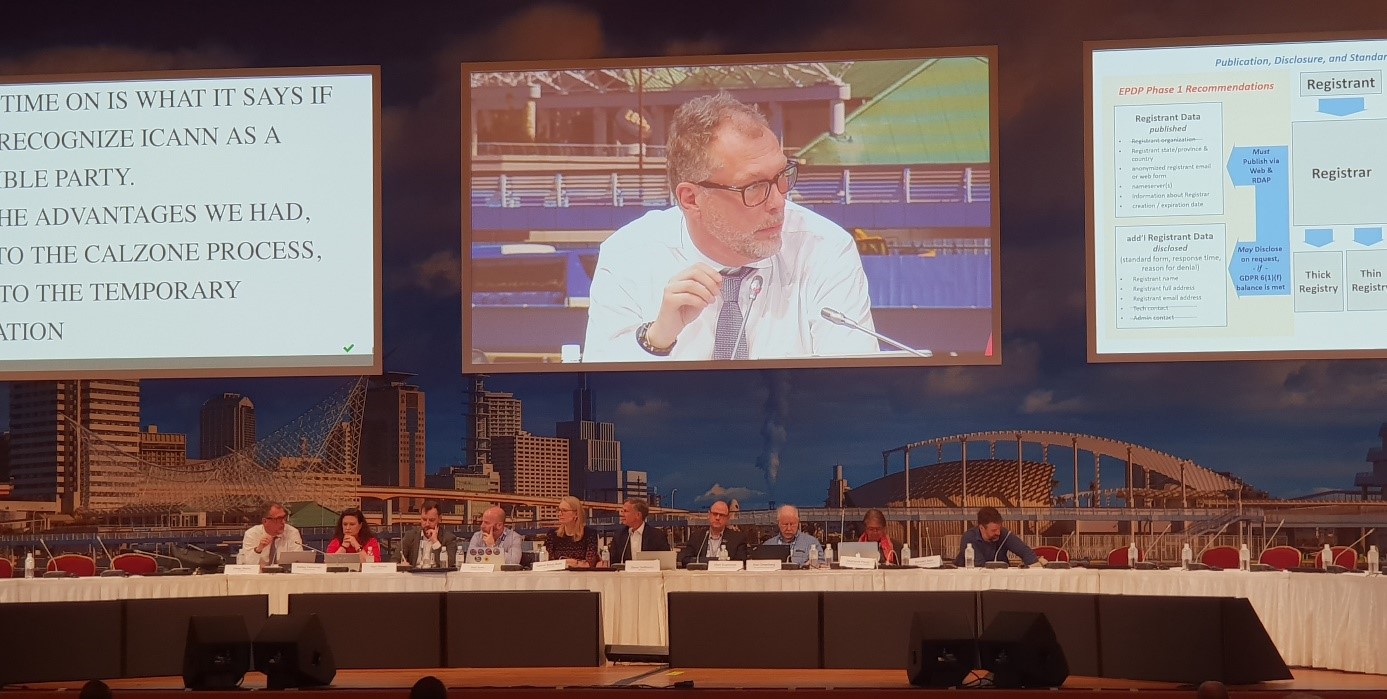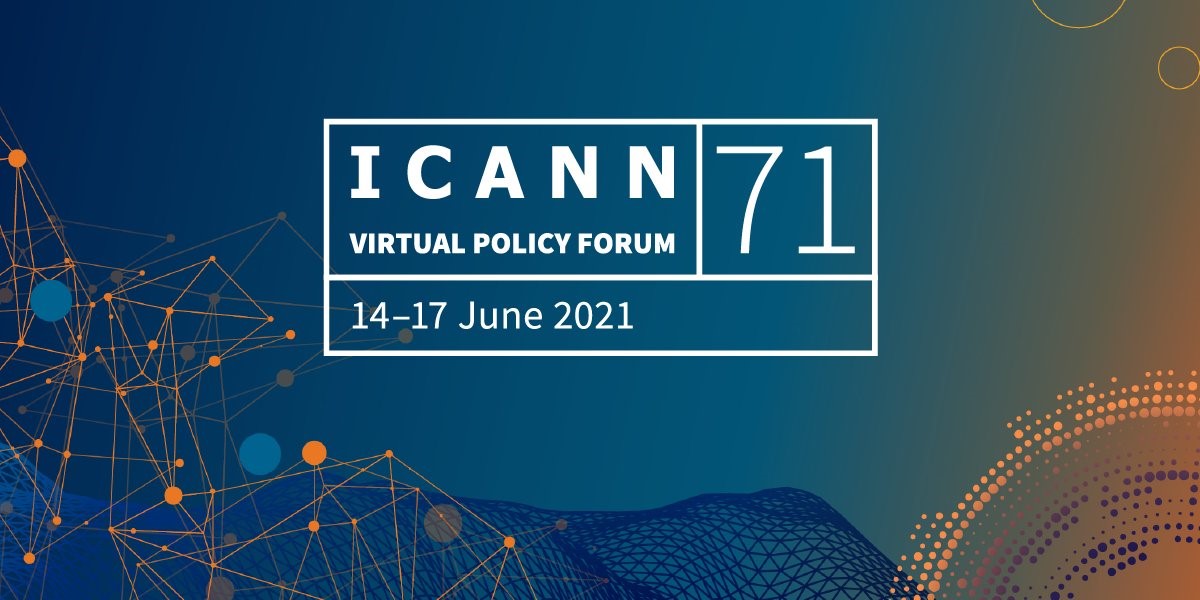
Some 56 sessions were scheduled as part of the 71st ICANN Summit in The Hague. Held once again exclusively by video conference due to the global health situation, no less than a quarter of these sessions were organised by the GAC, the governmental advisory committee that advises ICANN on public policy issues related to ICANN’s responsibilities in the domain name system. The GAC has been very active on all current ICANN policy issues and has clearly made its mark.
The GAC currently has 179 members, representing a majority of the world’s countries. This gives it a good representation on a global scale to speak to a global governance body. The GAC is highly organised and precedes ICANN meetings with preparatory meetings that enable it to gather opinions at local level and then relay them to the governance body. Once again, this summit highlighted the fact that there are really a lot of policy issues going on at ICANN level.
The fight against DNS abuse
The topic of abuse has almost become a chestnut at ICANN summits, as it has been at the center of concerns for almost two years. While registries and registrars are already subject to a battery of obligations on this topic, many stakeholders consider these to be insufficient to really address the issue. The year 2020 has indeed seen an explosion in cybersecurity breaches, particularly as a result of the global pandemic, which has seen even more consumption via the web, particularly due to confinements, and where working methods have had to be reinvented in favour of the remote. It is clear that little has been achieved to date on that issue.
A thorough initiative rich in proposals was formulated by the SSAC (Security and Stability Advisory Committee) which, in its 24 recommendations transmitted to the ICANN Board, put forward the idea of initiating an expedited Policy Development Process (ePDP) with a view to developing an anti-abuse policy. Their report to the Board three months ago has not been acted upon to date. The second and more recent initiative comes from the Registry Stakeholder Group (RySG). It has finalised, with input from the GAC, a framework aimed specifically at botnets, attacks that use forms of Trojan horses to take control of computers to form networks of computers to carry out further attacks. Its principle is to allow voluntary registries to join a scheme that requires them to preemptively block bulk names generated via DGAs (Domain Generation Algorithms), algorithms used to periodically generate large numbers of domain names that can be used as rendezvous points with their command and control servers. The large number of potential rendezvous points makes it difficult for law enforcement to effectively counter botnets, as infected computers will attempt to contact some of these domain names every day to receive updates or commands. The principle here is therefore preventive. In return, the registries would benefit from incentives and would not have to pay the tax collected by ICANN when a domain is created. This initiative is to be welcomed, but it is carried out more directly by the RySG and is therefore not consensual, hence its voluntary nature and therefore its very limited impact.
The reason the DNS abuse issue is so stalled is that it is confronted with other ongoing and upcoming policy development processes and competing interests between bodies, the Intellectual Property Constituency (IPC) for example being very concerned about access to contact data in domain name directories, the RySG about the launch of the next round of new gTLDs that they want to see move forward.
The impact of the General Data Protection Regulation (GDPR) on domain name registration data
Recall that to replace the Temporary Specification, which was put in place on 17th of May 2018 just a few days before the GDPR came into effect, an ePDP process was initiated. This process, described as expeditious, seemed to be far from being finalised at this new ICANN summit, even though three years have passed.
Segmented into three phases, phase 1 aims to provide a perennial policy that should frame the management of personal data of domain names to replace the temporary Specification that notably redacted personal data from domain name directories (via the Whois and RDAP protocols). Its drafting is progressing but no date is known for its finalisation and therefore possible implementation. The delay is partly due to the difficulty of transcribing certain recommendations, one of which was in conflict with an existing policy, the Thick Whois Transition Policy, which provides for the systematic transfer of detailed contact data from registrars to registries. Another pitfall is that the policy overlaps with other existing policies, which therefore also require ongoing adaptation.
Phase 2 concerns the establishment of a harmonised system of access to redacted name directory data for “legitimate” interests. This system is now known as the Standardised Data Access System (SDAS). The first hurdle was that the Generic Names Supporting Organization (GNSO), the policy-making body for generic names, had surprisingly approved all of the recommendations in the Final Report, even those that did not achieve consensus. The recommendations to create this system were therefore all transmitted to the ICANN Board, which rather than pronounce and vote on their application decided to first initiate an Operational Design Phase (ODP). Initiated at the end of March by the Board, it should last six months and aims to identify the stages, risks, costs and resources to be allocated, with a consultation of the community once a milestone has been reached. It is therefore a form of project scoping. The publication of a Request for Information is planned for June for a first consultation of the community.
A Phase 2a additional layer of the PDP aims to assess the possibility of unbundling the contact data of publishable legal entities from non-publishable natural persons. Initiated in December 2020, it resulted in five recommendations in an initial report open for comment until 19th of July 2021. The first recommendation, which was much commented on at ICANN71 , finally recommends that nothing should be changed by allowing players who so wish to make this differentiation. This process will continue with a final report of recommendations expected in the second half of the year.
The GAC considers that improvements are needed in both of the above-mentioned topics. In particular, it considers that the system does not go far enough to protect consumers and increase their confidence. It also regrets that the evolution of the system over time has not been framed and fears that the cost, since access is subject to an accreditation system, could be a deterrent, particularly for those involved in the fight against security breaches who need access to registration data. On DNS abuse, the GAC reiterates the need to address this issue. It has already made several proposals at previous summits.
What about the next round?
The next round is still undecided. We just learned that the ICANN Board, which has just received the last inputs on the recommendations for the next round of new gTLDs, has confirmed that it will start an Operational Design Phase (ODP) to estimate the steps, risks and resources necessary to implement these recommendations. Not yet planned, the Board said it had asked ICANN org to prepare a document to frame the ODP in order to draft the resolution that will formalise it. This resolution will set a deadline for completion of the ODP, possibly six months as with the SSAD.
The GAC, for its part, recalled the issues of specific concern to its members. These include: predictability, voluntary and mandatory registry commitments including how to address DNS abuse, its desire to see support for new applicants better adapted, particularly for less favoured areas, its opposition to closed generic TLDs, the consolidation of its ability to evaluate all applications in order to issue advices and warnings, and its opposition to private auctions to decide between applicants for the same gTLD. It also wishes to support non-profit community applications.
Other issues carried by the GAC are very committed
Other policy development processes are underway, such as the one on Governmental and Non-Governmental Organisation Identifiers (IGOs, INGOs), a process on the rights protection mechanisms, or in the initial phase a PDP on domain transfers and on the launch pad a PDP on IDNs. The GAC did not fail to recall the central issue of accuracy of registration data which is considered insufficiently addressed by the current obligations espacially due to the impact of GDPR. This topic will indeed be central in the perspective of the future NIS2 directives and the Digital Services Act currently being drafted at the European level. The GNSO was challenged by the GAC on the examination of this topic, which has not really started, and apologized for having too many topics in progress. Tensions that the GNSO has sought to alleviate by spending time reviewing its liaison with the GAC to improve it, a decidedly offensive and active GAC.
What About Future Summits?
ICANN summits usually end with a public forum where the public can directly question the Board. As a sign of a (temporary?) improvement of the health state on the covid, the traditional forum was dedicated to the future ICANN summits to know if they should be held in person. From this session it emerged that the answer is not obvious. At issue were the different levels of vaccination and access to vaccines in different countries, the currently restricted conditions of entry to the USA, ICANN72 being held in Seattle and the evolution of the pandemic which remains uncertain. This forum provided an opportunity to comment on a recent survey conducted by ICANN which showed that the majority of those interested in ICANN events considered that face-to-face meetings should be reactivated (54%). At the end of this session, ICANN committed to arbitrate during July. The format of ICANN72 could be hybrid, with limited on-site representation and the continuation of the remote format.
A notable feature of this summit was the large number of ongoing issues and the impression that things are moving forward with difficulty. This has resulted in notable tensions between bodies and discontent expressed, for example, by the group of representatives of geographical extensions, the geoTLDs. If for some, the return to face-to-face meetings seems to be the solution to improve things, through our presence in certain bodies and our participation in working groups, we think that it is rather a problem of visibility due to too many subjects being launched in parallel, some of which overlap with a clear lack of prioritisation. The ODP, the new tool which aims to frame the implementation of a harmonised system of access to registration data and which is now being applied in the next round, may go some way to improving these perceptions. Another aspect to be considered is the diverging interests between bodies. Here, facilitated exchanges can perhaps improve things.
